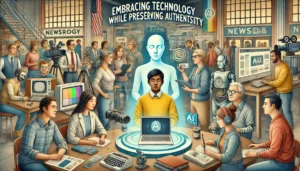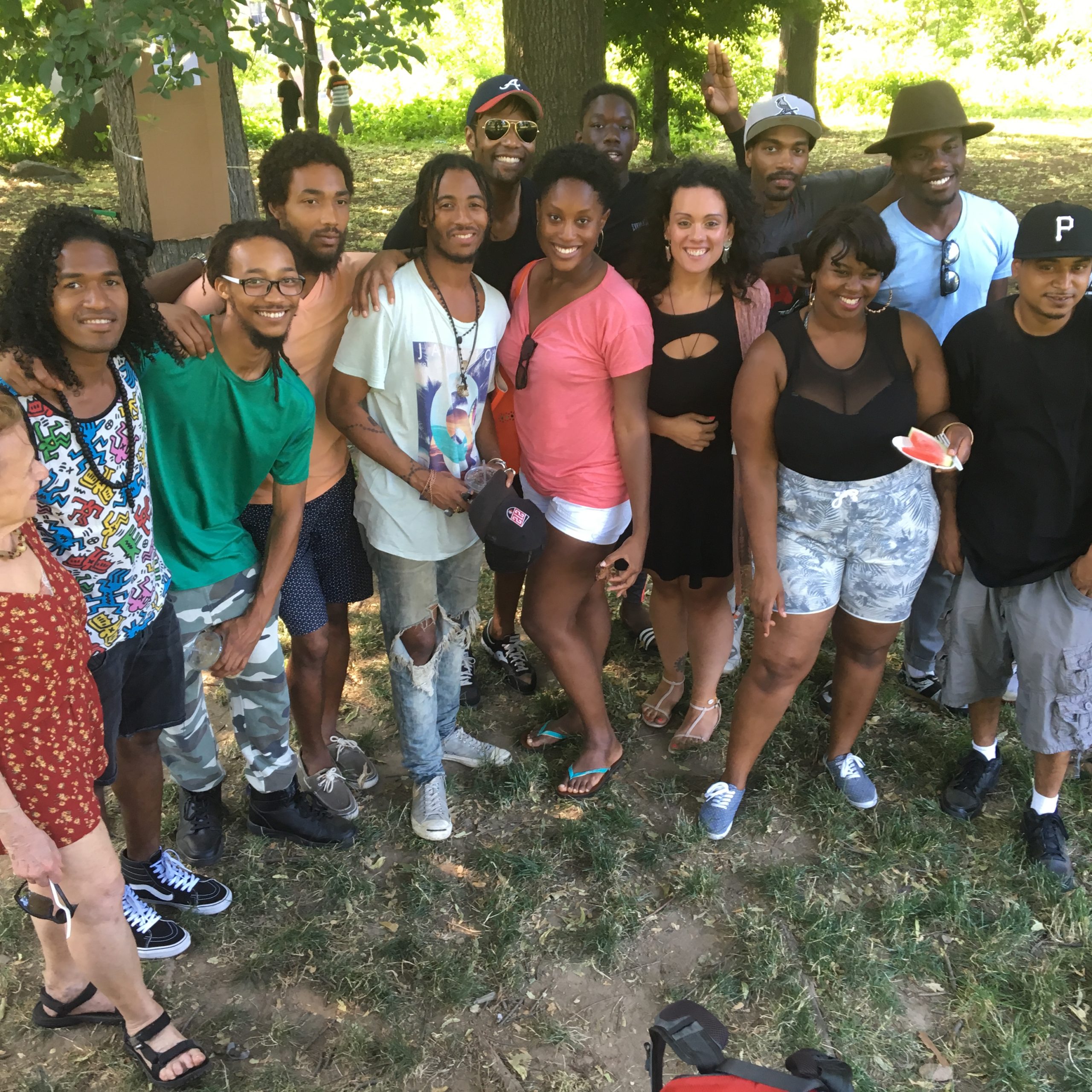
Our 2nd HarlemLIVE reunion picnic in Central Park
(This is the same content as it appears in the book).
After the tragic and sudden death of HarlemLIVE alum Stanley Antoine in September 2014, my passion for education was rekindled. It drove me to seriously consider writing this book and reengaging with HL alumni. We began hosting annual reunion picnics in Central Park and embarked on domestic and international trips.
I also started working with children in my building, including Muhammad and Abdoulaye Diop, and the children of HarlemLIVE alumni Melvin, Ena, Shaunetta, and Ife. Together, we explored the city and beyond, cooked meals in my apartment, and even created homemade press badges to cover events.
Fostering Community through Newsletters
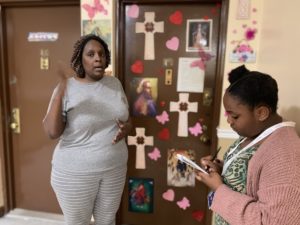
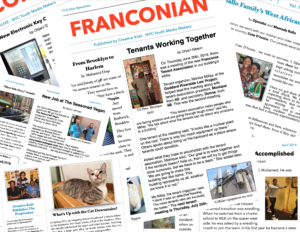 Eventually, we published a few newsletters for the residents in my apartment building to demonstrate how journalism could be used in a hyper-localized context with younger kids. These newsletters, which were a double-sided single sheet, included stories about the communal pet cat in the basement, a broken elevator, new tenants, building information, and the filming of West Side Story just down the block. They showed that a localized version of HarlemLIVE could build skills, create a portfolio, and foster community.
Eventually, we published a few newsletters for the residents in my apartment building to demonstrate how journalism could be used in a hyper-localized context with younger kids. These newsletters, which were a double-sided single sheet, included stories about the communal pet cat in the basement, a broken elevator, new tenants, building information, and the filming of West Side Story just down the block. They showed that a localized version of HarlemLIVE could build skills, create a portfolio, and foster community.
Journalism and Civics in High School Curricula
As an educator and mentor with three decades of experience, I passionately advocate for incorporating journalism into school curricula, particularly during the freshman and/or sophomore years. Journalism offers an engaging alternative to traditional grammar classes, instilling critical skills through a dynamic learning process. In the first semester, students can learn research, reporting, and writing techniques by contributing to a school publication.
Equally pressing, in my view, is the reintroduction of civics in schools. As someone who was fortunate to have a semester of civics in high school, I can attest to its profound impact on understanding the workings of our government. A startling number of citizens today seem disconnected from the intricacies of governance, and a strong civics foundation can bridge this knowledge gap. It’s not just about knowing the three branches of government, but about fostering a deep understanding and appreciation for the democratic processes that shape our nation.
When paired with journalism, these two disciplines can create a potent combination to ensure students are not only well-informed but also active participants in their democracy.
In an optional second semester, students can delve deeper, exploring stories that align with their career interests. Those who continue to show interest in journalism can take on leadership roles in school publications and possibly even consider a career in this field.
These high school journalism classes could play a crucial role in teaching media literacy skills, enabling students to evaluate the validity of news sources and understand the impact of technology platforms on society.
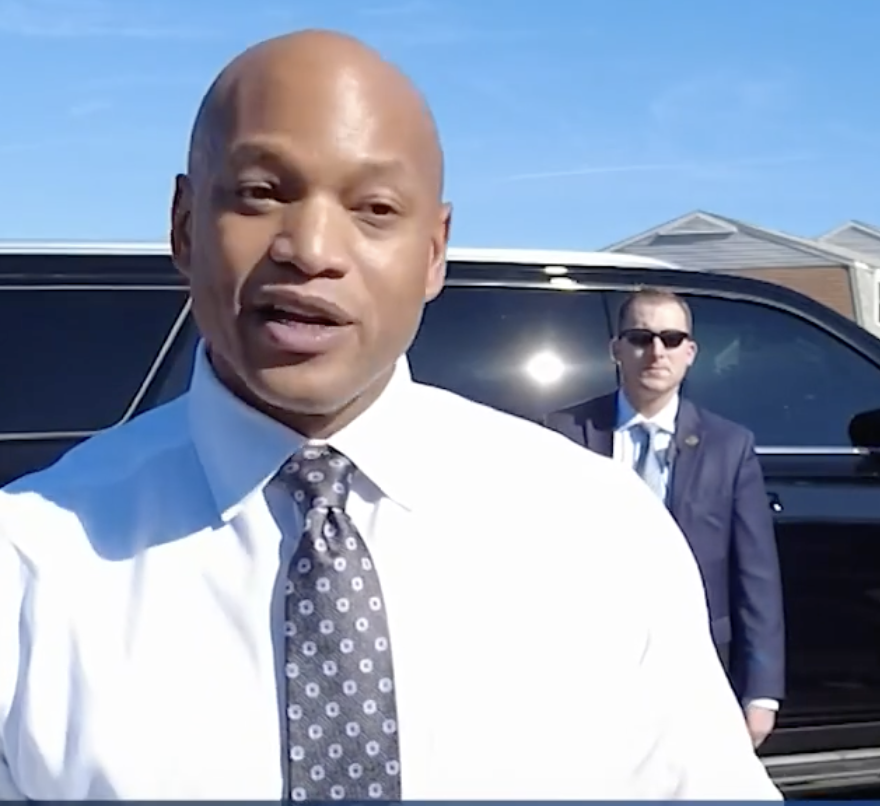
Promoting Gap Years for Civic Engagement
I am a staunch supporter of taking one or more gap years after high school and before college. In this context, it’s worth noting that a first-in-nation paid service law was signed by Maryland’s governor, Wes Moore, in 2023.1 These gap years allow young people to explore apprenticeships and other hands-on learning experiences in conservation, health care, and other fields. Governments could further incentivize this by offering higher education tuition vouchers, as they do for military entrants.
Programs like these not only build civic engagement but can also augment local issue coverage, particularly if service is provided through journalism. Many local news operations are now controlled by investors and hedge funds with scant concern for community well-being. Colleges and universities could step into this breach, offering news coverage in areas where local journalism has been gutted. This not only benefits local communities but also equips students with essential skills and nurtures a sense of civic responsibility.
Recognizing the transformative impact of service learning, I advocate for its integration beginning in the senior year of high school. This approach not only prepares students for real-world challenges but also instills a deep sense of community service and responsibility. By engaging in meaningful projects that address societal needs, students can apply their learning in impactful ways, fostering a culture of empathy, innovation, and civic engagement.
Additionally, bringing back trade schooling to high schools can address the current imbalance where most focus is on STEM fields. Skilled trades are essential to our economy, and providing students with opportunities in areas like manufacturing technology and machining can open up well-paid, fulfilling careers.
Darnell Epps, a recent graduate of Yale Law School, highlighted the untapped potential of skilled trades in his Washington Post article. He shared his experience of graduating from both Yale Law and Lincoln Technical Institute, emphasizing the importance of skilled trades in building and maintaining our nation’s critical infrastructure.”
 Empowering Communities Through Accessible Journalism Programs
Empowering Communities Through Accessible Journalism Programs
Our founding fathers viewed a free press as a vital component of a thriving republic. Today, the explosion of news sources and proliferation of disinformation threaten to undermine public trust and faith in reporting. Given these circumstances, I believe it is crucial to increase the accessibility of journalism programs in schools and communities.
Over the years, HarlemLIVE has provided ample proof that journalism skills lay a solid foundation for students, enabling them to become productive, resourceful, and creative in their future endeavors.
The impact of HarlemLIVE reaches far beyond its founding in Harlem. Alumnus Shem Rajoon and his wife, Jean Chung, have used drafts of this book to launch a youth community journalism newsletter in Newburgh, New York, showcasing the enduring influence of HarlemLIVE’s mission.
Similarly, alumnus Kevin Benoit, a former Editor-in-Chief of HarlemLIVE and current publisher of Parlé magazine, has established Parlé Endeavors. This non-profit is dedicated to empowering young adults in creative fields, offering scholarships, mentorship, and engaging initiatives like a Teen Poetry Slam series. These endeavors highlight the power of HarlemLIVE, fostering a new generation of proactive, expressive young leaders.
Embracing Technology while Preserving Authenticity
Reflecting on HarlemLIVE’s journey, adaptation has been crucial. Now, as artificial intelligence (AI) emerges, it presents both opportunities and challenges for youth media. While AI can refine and amplify young voices, its role should be supportive, not dominant. It’s vital that we teach the next generation to harness AI to ensure that their narratives stay authentically theirs in this evolving technological landscape.